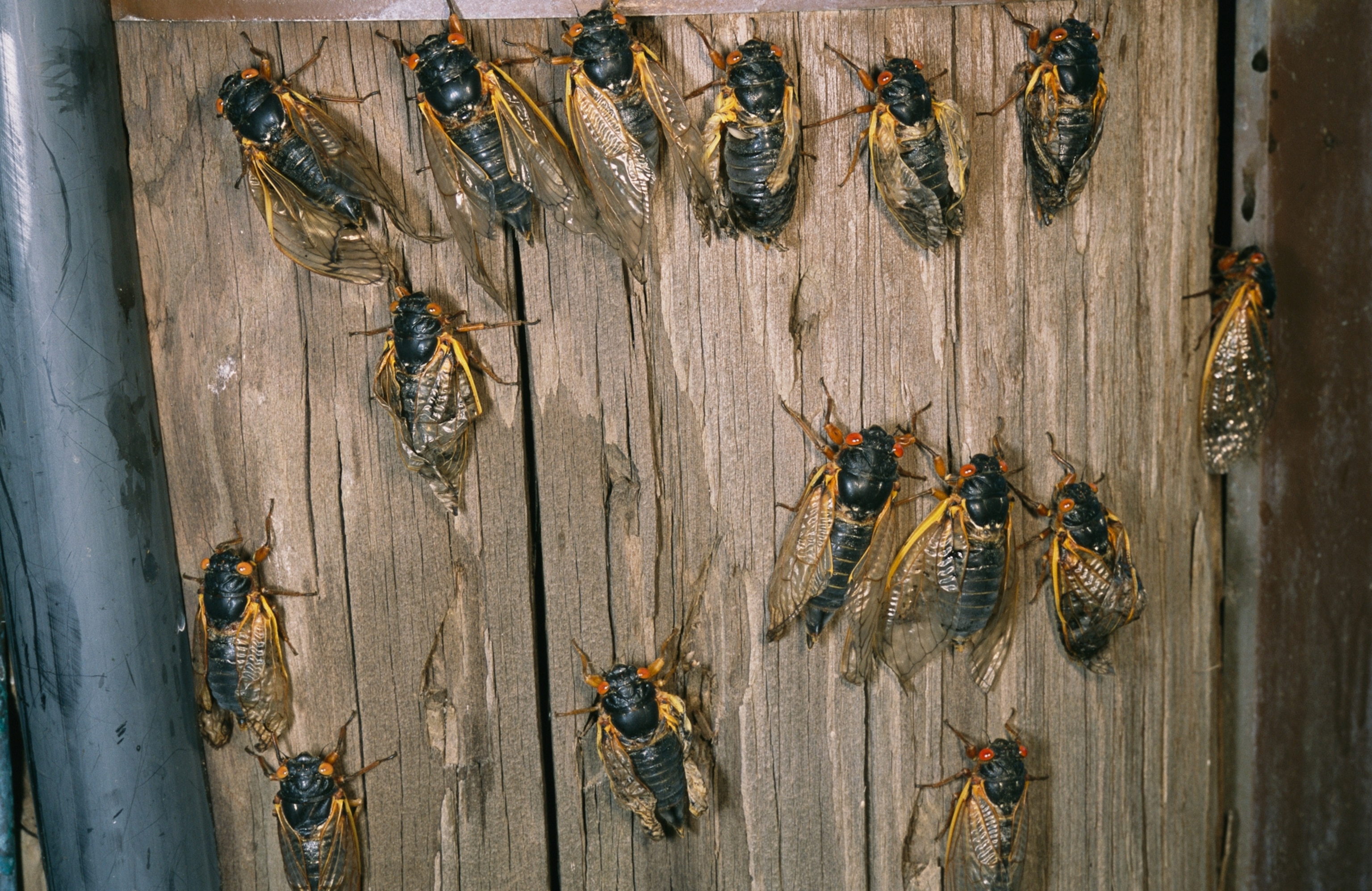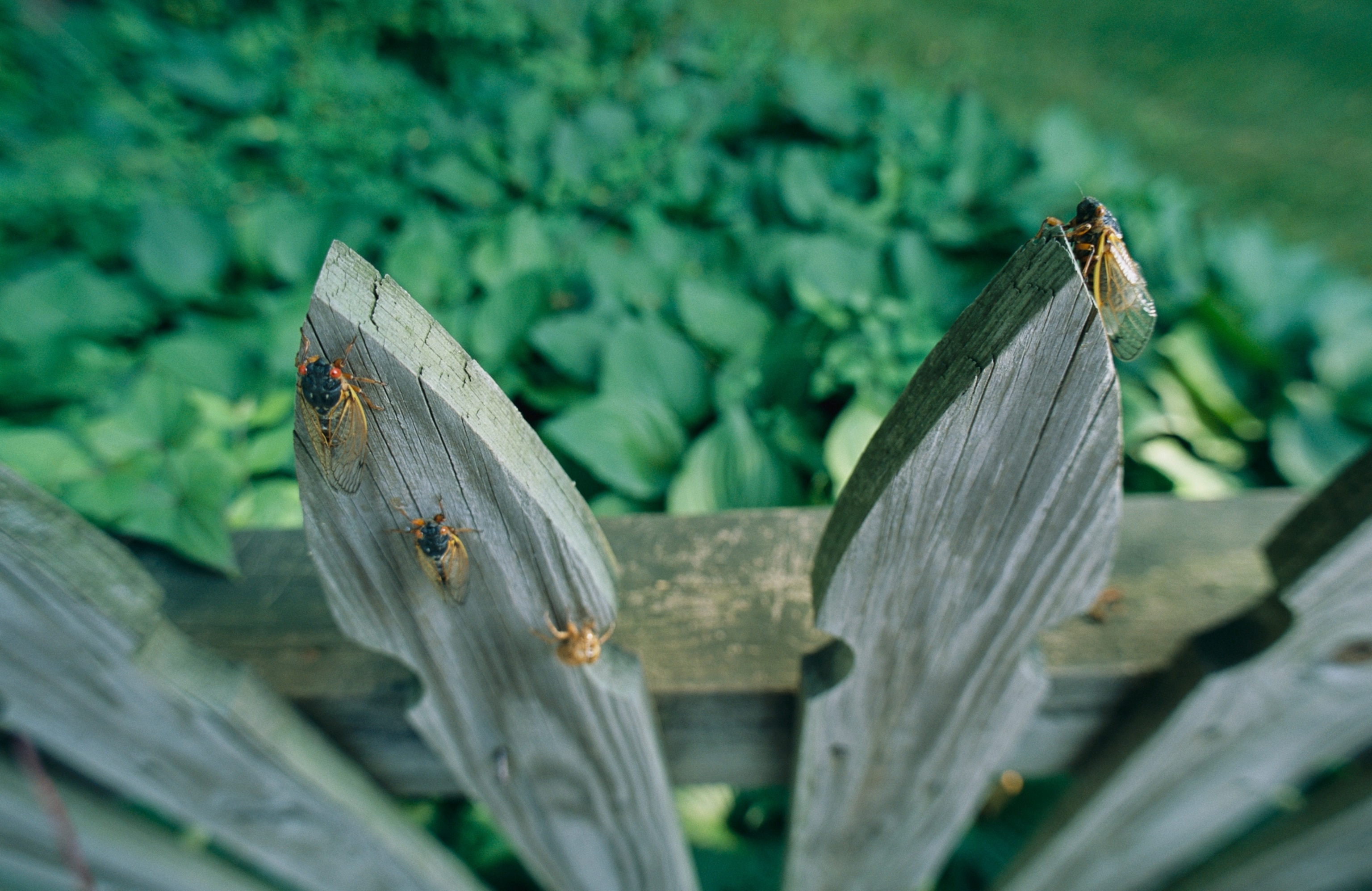In the late spring of 1634, pilgrims in Massachusetts witnessed an incredible sight: Millions and millions of winged, red-eyed insects sprung from the earth. Not knowing better, the Puritan immigrants likened them to pestilential swarms from the Old Testament and called them “locusts.”
But they were wrong. This was the first written record of periodical cicadas, seven species of which emerge every 13 or 17 years in the U.S. Midwest and East Coast. This year, trillions of the insects will once again burst from the ground and take to the trees, making loud mating songs as they harmlessly sip tree sap.
The 2021 cicadas, known as Brood X, are the biggest of the 15 known periodical cicada broods. These inch-long insects will soon emerge throughout large swaths of Indiana, Ohio, Pennsylvania, Maryland, Washington D.C., and beyond.



Not everybody is thrilled, with many on social media fearing the shrill sounds of the cicadas, as well as their disgust overall. “If the cicadas ruin summer 2021, I will scream,” said one Twitter user. Even today, nearly 400 years after the Puritans arrived, some Americans still mistakenly refer to the cicadas as locusts, a completely different type of insect that’s known for devouring crops.
With cicadas, though, there’s nothing to fear—and witnessing such a huge arrival of insects is actually a rare privilege, says Jeffrey Lockwood, an entomologist and professor of natural sciences and humanities at the University of Wyoming
“It’s a phenomenon that ought to generate awe and respect and wonder,” he says.
“Wonderfully humbling”
For one thing, the scale of Brood X is massive, a relic of a time, before European colonization, when North America teemed with insects and other animals. In some forests, up to 1.5 million cicadas can surface in a single acre. By some estimates, there could be several trillion of the insects emerging this summer, Lockwood says.
“We’ve done such a thorough job of decimating the natural world that any organism, at least any animal, that appears in these sorts of numbers—it’s wonderfully humbling,” Lockwood says. It’s a reminder that humans are not the only animal on this planet and that we need to share the space with others, he says.
Richard Karban, an entomologist at University of California, Davis, says that these insects “are the herbivores of eastern forests,” more impressive in number and mass than any other. Although we see them only every 17 years, they are there all the time, slowly growing underground while drinking fluids from tree roots. (Read more about why U.S. cicadas lie dormant for over a decade.)

One study estimated that the total biomass of cicadas in a given area of forest is greater than the biomass of cattle the same area could support if it were turned into pasture. These estimates “are the highest recorded for a terrestrial animal under natural conditions,” the scientists wrote.
“You’re taking insect biomass that’s been underground for years and then quickly moving it aboveground—and this has far-reaching positive impacts,” says Elizabeth Barnes, an entomological educator at Purdue University
Besides being a source of food for predators, the cicadas’ emergence helps move nutrients around the ecosystem, aerate the soil, and relieve predatory pressure on non-cicada insect populations, she says.
Why 17 years?
There are about 3,000 cicada species on Earth, but only seven are periodical cicadas, which are unusual in that they come out every 13 or 17 years and are almost all found in North America. But why do they choose such long time periods, which are both prime numbers?
There are several theories. One is that these periods evolved to optimally avoid predators, Barnes says. The second is that by using prime numbers, the periodical cicadas minimize overlap with other periodical cicadas, thus avoiding genetic hybridization and competition for resources.
But these theories are speculation, Karban says, as there’s currently no real way to test them.



Foolhardy bugs
Another unusual aspect of the insects’ behavior is that, unlike almost all other non-noxious insects, “they do very little to escape predators,” Karban says, which is why some call them foolhardy in the face of a hungry animal.
“Anything with a mouth is going to eat them, so it’s going to be a good year to be a bird” or any other predator, says John Cooley, an entomologist at the University of Connecticut.
The synchronized swan song of such large masses likely evolved because they overwhelm predators, becoming so numerous that only a small percentage of the total can be eaten. (Check out these cicada recipes.)
This phenomenon, and the loud noises they make, is all about procreation, Lockwood adds. “They’re coming out in the biggest orgy that you’ll see in your lifetime,” he says.
Incredible phenomenon
The least we can do is not be afraid. “They don’t sting, they don’t bite, they’re not going to try to come after you,” Barnes says. Fear of insects generally comes from a lack of education and experience, she adds.
“I think Americans in particular are kind of trained to abhor insects—they don’t have a lot of contact with them and think of them as being dirty,” Cooley says. (Learn more: Murder hornet mania highlights dangers of fearing insects.)
But Brood X’s arrival is a chance to change that, Cooley says, by stopping to take a closer look at cicadas and appreciating their long, synchronized life cycles, including their brief, four-to-six weeks of life aboveground.
People should also appreciate that these insects have been around for about five million years, about the time that the ancestors of humans and chimpanzees split from one another, Cooley says.
The Brood X emergence offers hope, too, he says: “It’s an indication that the forests are healthy enough to function.”










